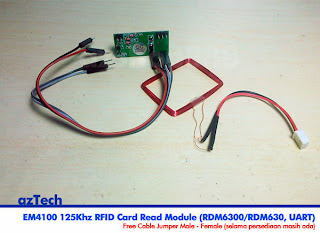XL 6009 - DC-DC Stepup better than LM2577
Harga Rp. 55.000 (kontak untuk ketersedian produk)
harga diluar ongkos kirim
Isi Paket
1x XL 6009
Our products are independent research and development and production, sophisticated technology, each products are through strict test before sent to the user. And can meet the demand of batch.
32 V - 3.2 V input output highest 38 V
Output voltage range: 4 v to 38 v dc voltage continuously adjustable, high efficiency (96%) of the maximum output current for 4A.
Advantage: use double thickening black oil PCB with high quality, all use imported SMD aluminum electrolytic capacitors, high Q value power inductors. And every piece of plate passes through the strict technical test, test completely using separate antistatic protection bag packaging.
Note
harga diluar ongkos kirim
Isi Paket
1x XL 6009
Our products are independent research and development and production, sophisticated technology, each products are through strict test before sent to the user. And can meet the demand of batch.
32 V - 3.2 V input output highest 38 V
Output voltage range: 4 v to 38 v dc voltage continuously adjustable, high efficiency (96%) of the maximum output current for 4A.
Advantage: use double thickening black oil PCB with high quality, all use imported SMD aluminum electrolytic capacitors, high Q value power inductors. And every piece of plate passes through the strict technical test, test completely using separate antistatic protection bag packaging.
Note
- This modules relative to the LM2577 triode mode conversion efficiency is higher
- This module is adjustable booster module, can by adjusting the precision of modules above circle more adjustable potentiometer
- To change the output voltage. The highest output voltage is 38 v. Chronological booster, reverse-time step-down.
- The module above marked GND (input), the IN + (input), GND (output), the OUT + (output)
- Working temperature: : industrial grade 40 to + 85 (-) (ambient temperature more than 40 degrees, please reduce power use, or enhance heat dissipation)


